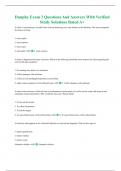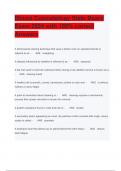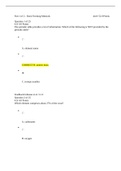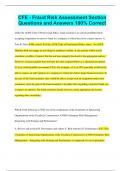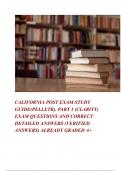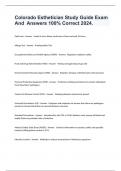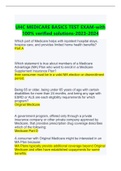Exam (elaborations)
Dunphy Exam 3 Questions And Answers With Verified Study Solutions Rated A+
- Course
- Institution
Dunphy Exam 3 Questions And Answers With Verified Study Solutions Rated A+ A client is experiencing a circular lesion with an advancing, red, scaly border on the abdomen. The nurse recognizes this lesion as being: 1. tinea capitis. 2. tinea corporis. 3. tinea cruris. 4. tinea pedis. ANS 2. ...
[Show more]
